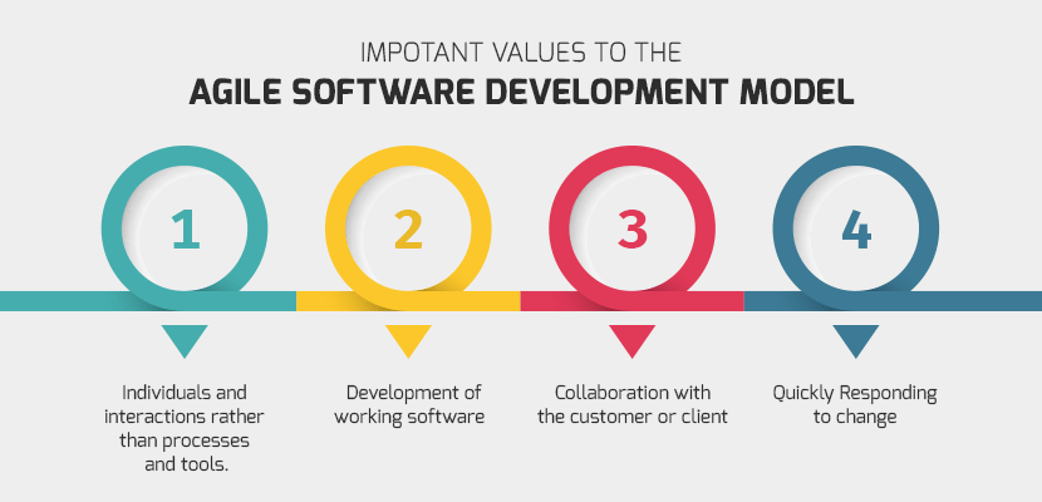Embracing Agility in Software Development
In the dynamic world of software development, the term ‘Agile development’ has transcended from being just a methodology to becoming a vital philosophy.
At EliteCoders, we’ve embraced this philosophy wholeheartedly. Agile development is more than a set of principles; it’s a mindset that has revolutionized the way we approach software development. As a beacon in this field, we understand the importance of not just knowing Agile development but also living it.
This article is our effort to distill the essence of the Agile Manifesto and its principles, making them easily understandable for everyone, from novices to seasoned professionals.
The Genesis of Agile Development: Responding to a Changing World
History and Evolution
In the late 1990s, frustration was brewing among software developers. Traditional models, notably the Waterfall model, were increasingly seen as rigid and unable to keep pace with the rapid evolution of business needs.
This disconnect led to a pivotal gathering in 2001 at The Lodge at Snowbird Ski Resort in Utah. Seventeen thought leaders, including Jon Kern and Kent Beck, penned the Agile Manifesto, a document that would change the landscape of software development forever.
The Agile Manifesto: A Revolutionary Approach
The Agile Manifesto presents four fundamental values and twelve guiding principles. It was a response to the industry’s need for a more adaptable, human-centered approach to software development. What sets Agile development apart is its emphasis on flexibility, collaboration, and customer satisfaction over rigid processes and extensive documentation.
The Core Values of Agile Development: A New Paradigm
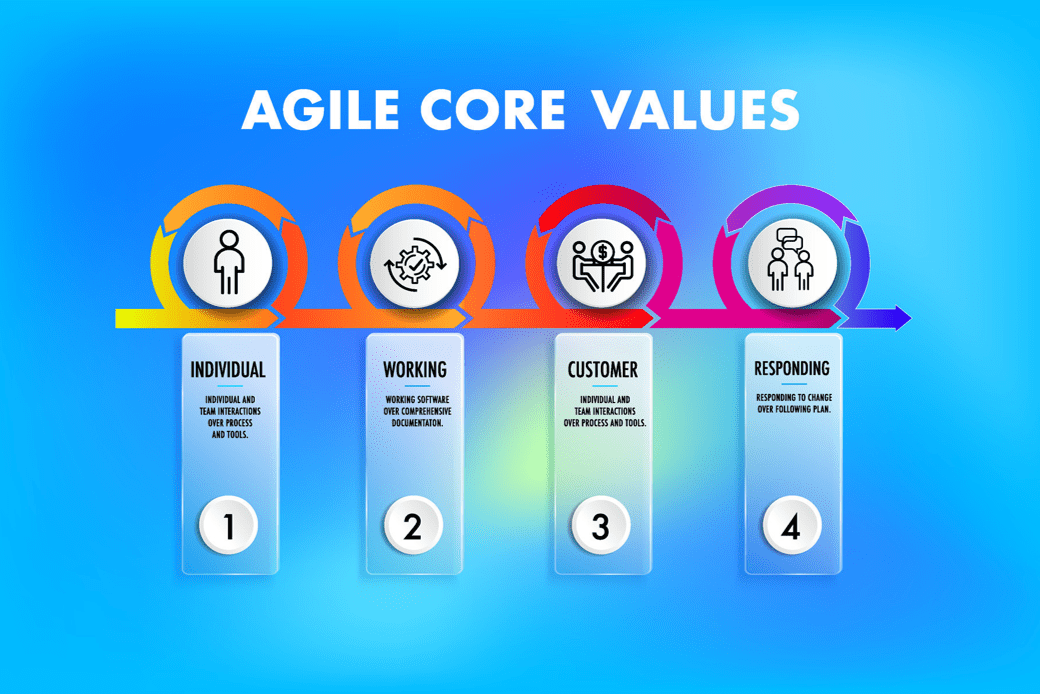
Understanding the Four Pillars
Agile’s four core values form the foundation of its methodology:
- Individuals and Interactions Over Processes and Tools: Agile development prioritizes human elements over rigid processes. It values the creativity and problem-solving abilities of individuals, advocating for effective teamwork and communication.
- Working Software Over Comprehensive Documentation: Agile development recognizes the importance of documentation but places higher value on delivering functional software. It promotes the idea of a minimum viable product (MVP) over extensive documentation that may delay the development process.
- Customer Collaboration Over Contract Negotiation: Agile development encourages continuous customer involvement throughout the development process, rather than restricting it to the initial and final stages. This collaboration ensures that the end product aligns closely with the customer’s needs and expectations.
- Responding to Change by Following a Plan: Agile development is built on the principle of flexibility. It embraces change, even late in development, ensuring that the product remains relevant in a rapidly changing business environment.
The Remaining 8 Agile Development Principles
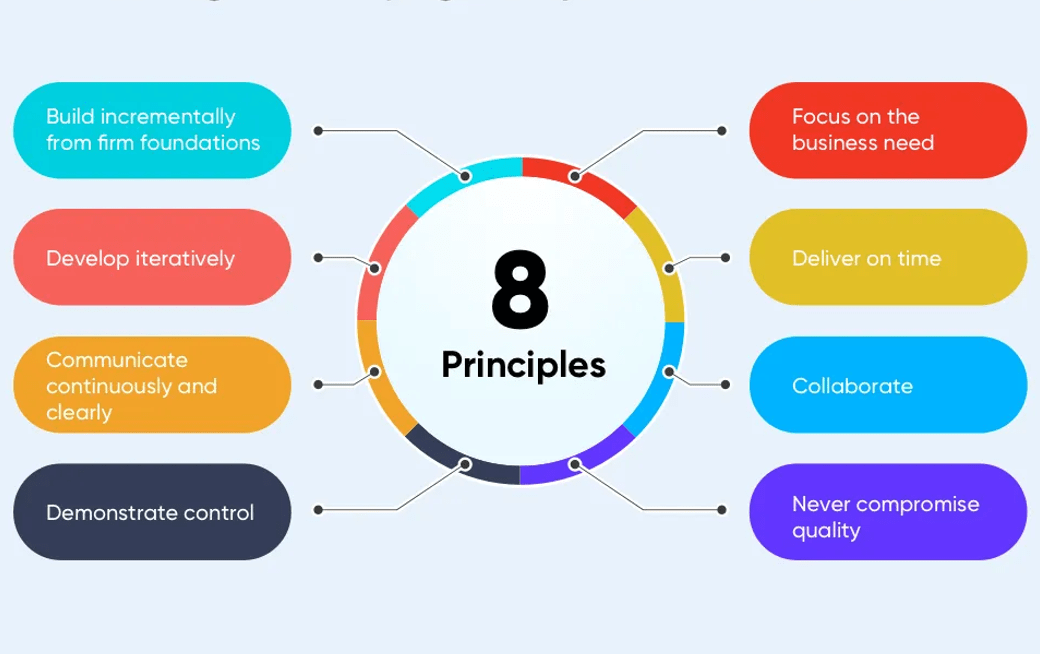
Agile’s remaining 8 principles further expand on these values, providing a roadmap for effective software development. Each principle focuses on specific aspects of the development process, from customer satisfaction to sustainable development practices.
Customer Satisfaction through Early and Continuous Delivery:
Agile development emphasizes the need to deliver valuable software early and continuously to satisfy customers and respond to their evolving needs.
Embrace Change for Competitive Advantage:
Agile methodologies welcome changing requirements, even in late development stages, to leverage competitive advantages.
Frequent Delivery of Working Software:
Agile development teams aim to deliver working software frequently, from a few weeks to a few months, with a preference for shorter timescales.
Collaborative Work Environment:
Agile development stresses the importance of daily collaboration between business stakeholders and developers to ensure a cohesive understanding of the project goals and requirements.
Support and Trust in Motivated Individuals:
Agile development believes in building projects around motivated individuals, providing the necessary environment and support, and trusting them to get the job done.
Face-to-Face Communication:
Agile prioritizes direct, face-to-face communication as the most efficient and effective method of conveying information within a development team.
Working Software as a Primary Progress Measure:
In Agile, the primary measure of progress is working software, emphasizing the importance of delivering functional products over mere documentation.
Sustainable Development Pace:
Agile promotes maintaining a constant, sustainable pace of development to avoid burnout and ensure long-term project success.
The First Principle in Depth

Customer Satisfaction through Early and Continuous Delivery
The first principle of the Agile Manifesto places the highest priority on satisfying the customer through early and continuous delivery of valuable software.
This approach is fundamentally different from traditional methodologies, where software delivery might happen only after long development cycles.
In the Agile world, delivering small, working increments of the product allows for immediate feedback and rapid adaptation to changing customer needs. This principle reinforces the idea that a satisfied customer is the ultimate measure of progress and success.
Embracing Change: The Agile Approach to Evolving Requirements
Welcome Changing Requirements, Even Late in Development
A key strength of Agile is its ability to embrace change, even late in the project. Traditional project management methods often view change as a threat to be minimized.
In contrast, Agile sees change as an opportunity to deliver additional value to the customer. This principle means that Agile teams are always ready to adapt their plans to accommodate new or changing requirements, ensuring the final product is as relevant and valuable as possible.
Frequent Delivery of Working Software
Deliver Working Software Frequently
Agile teams aim to produce working software frequently, from a couple of weeks to a couple of months, with a preference for a shorter timescale.
This principle emphasizes the importance of momentum and regular progress. By delivering working software at regular intervals, teams can ensure that they are on the right track and can make adjustments as needed.
This frequent delivery also enables customers to start realizing the value of the software earlier in the process.
Collaboration is Key: Business and Developers Working Together

Business People and Developers Must Work Together Daily throughout the Project
In Agile, collaboration is not just encouraged; it’s essential.
This principle emphasizes the need for daily interaction and cooperation between business stakeholders and developers.
This close collaboration ensures that the development team understands the business context and objectives, and the business stakeholders are kept up to date with the progress and challenges of the development process.
It’s about breaking down the silos and building a partnership that drives the project forward.
Empowering Teams: Building Around Motivated Individuals
Agile recognizes that the key to successful projects is in the hands of its team members.
The principle of building projects around motivated individuals who are supported and trusted to get the job done shifts the focus from micromanagement to empowerment. It’s about creating a culture where individuals can thrive, bringing their best to each project.
An expert in Agile methodologies, Alistair Cockburn, aptly said, “Agile methodology is not so much about doing more, but about being more.”
This statement captures the essence of empowering individuals within the Agile framework.
The Power of Face-to-Face Communication
In an era where digital communication reigns, Agile emphasizes the value of face-to-face conversation as the most effective form of communication.
This principle underlines the importance of personal interaction in understanding nuances and building relationships within the team. Even in remote or hybrid work environments, Agile encourages video calls and virtual meetups to maintain the effectiveness of direct communication.
Measuring Progress by Working Products
In Agile, progress is not measured by the amount of documentation or the completion of various stages in a project plan. Instead, the primary measure of progress is the delivery of working software.
This principle shifts the focus from activities to outcomes, ensuring that every step taken contributes directly to the creation of a functional product. It’s about delivering tangible value at every stage of the development process.
Maintaining a Constant Pace Indefinitely
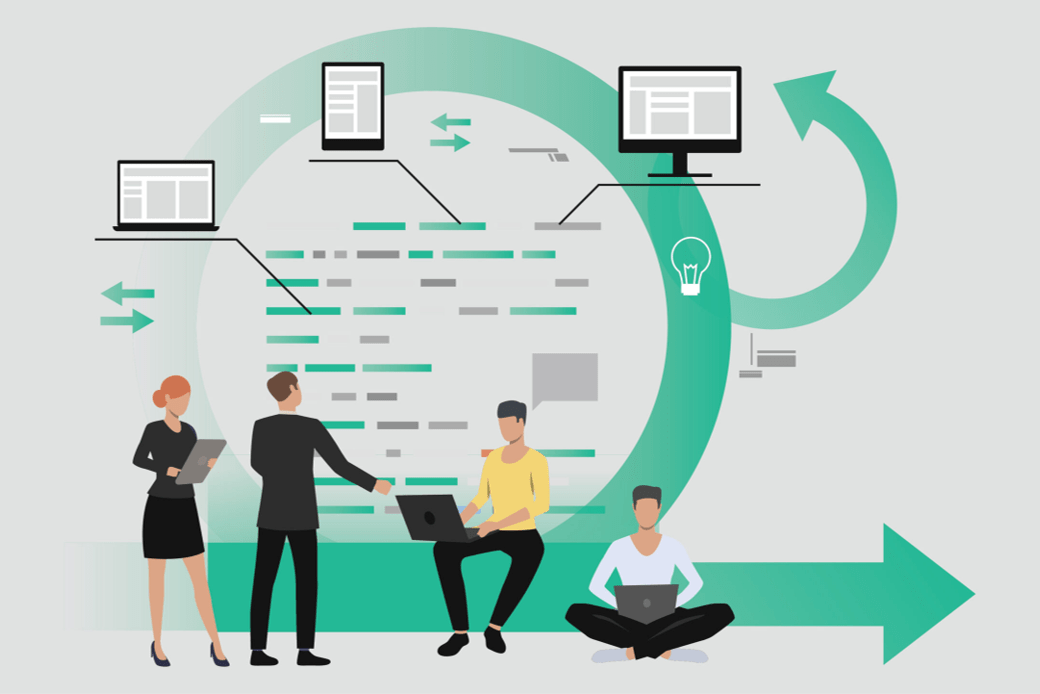
A fundamental aspect of Agile is sustainable development, promoting a steady pace of work to avoid burnout and ensure long-term project success.
This principle recognizes the human aspect of software development, emphasizing the need for a balance that allows teams to maintain their health and well-being while consistently delivering value.
Real-World Application and Case Studies
The application of Agile principles can vary significantly across different organizations and projects. A notable example is a global technology firm that adopted Agile to enhance its product development process.
The result was a remarkable improvement in time-to-market and customer satisfaction. Their approach to embracing change and frequent delivery of working software played a crucial role in their success.
Challenges and Misconceptions in Agile Implementation
Implementing Agile is not without its challenges.
Common misconceptions include the notion that Agile means no planning or that it’s only suitable for small projects.
Overcoming these misconceptions requires a deep understanding of Agile principles and the flexibility to adapt them to various project scopes and sizes.
Agile Development as a Mindset
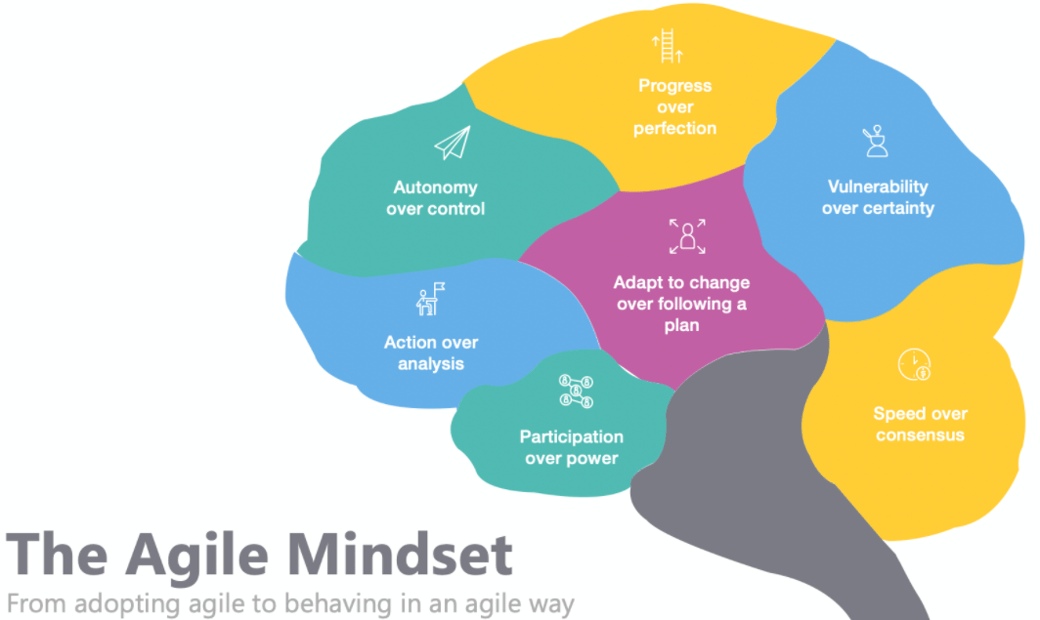
In conclusion, the Agile Manifesto is more than a set of guidelines; it’s a mindset that requires a fundamental shift in how we approach software development.
It’s about embracing change, empowering individuals, and focusing on delivering real value. As we at EliteCoders have experienced, adopting Agile is a journey of continuous improvement and adaptation, leading to more effective and efficient software development processes.
For further exploration of Agile methodologies and their application, we recommend delving into the rich array of resources available, including the original Agile Manifesto, various Agile frameworks, and case studies. Embracing Agile is about embarking on a journey of learning, growth, and continuous adaptation, and for us at EliteCoders, it’s full steam ahead!
